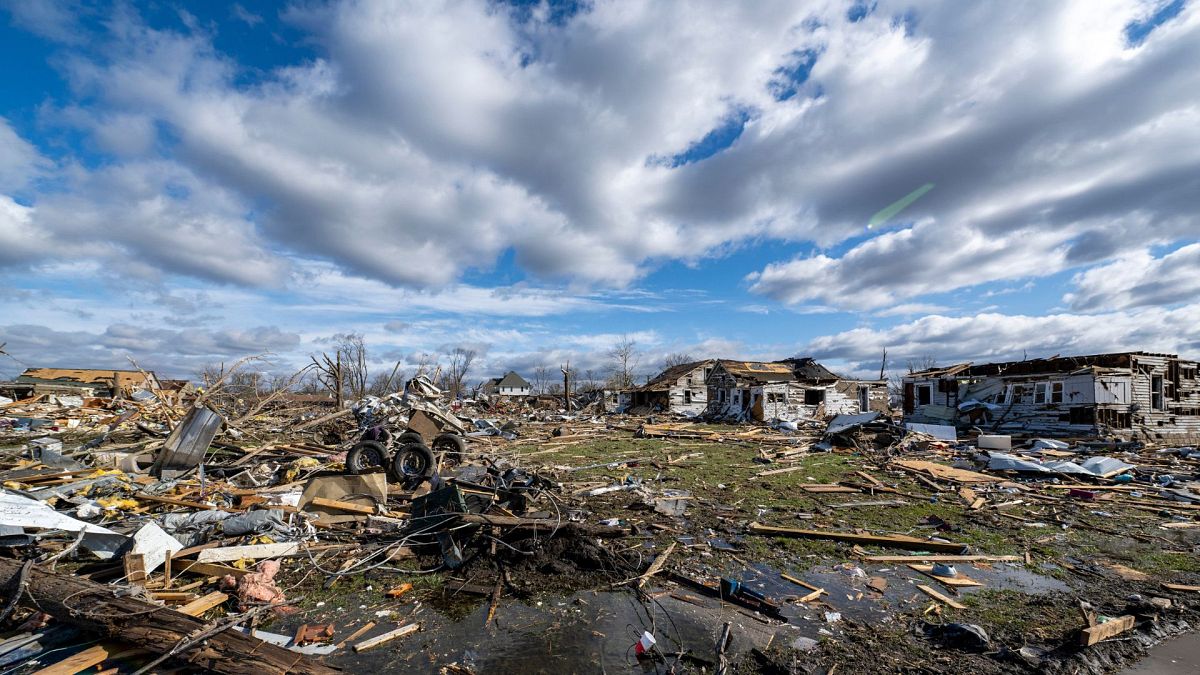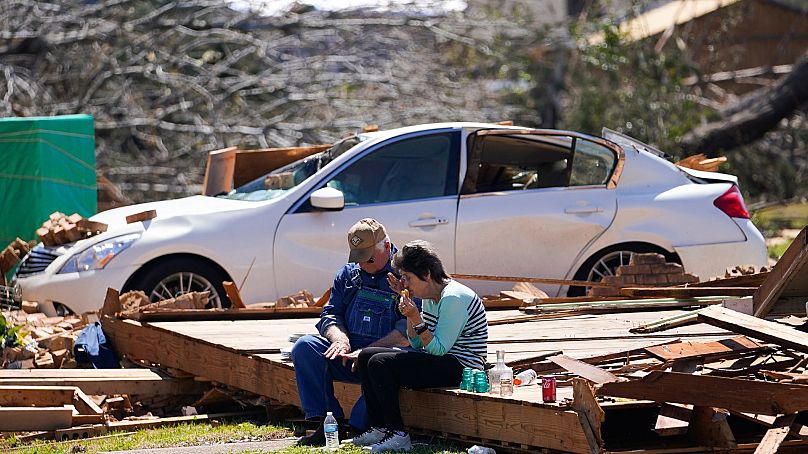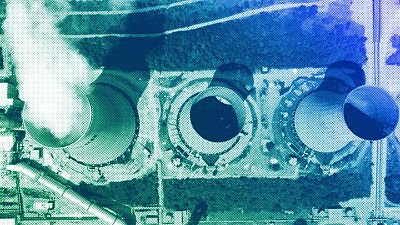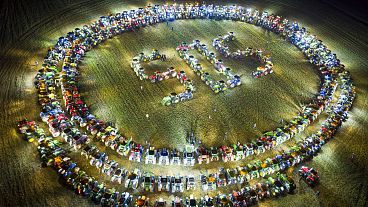Climate change could make the storms that produce tornadoes worse, a new study suggests.
More than 50 people have died over the past two weeks as a series of deadly tornadoes hits the United States.
The spate of ‘twisters’ ripped through Alabama, Illinois, Mississippi, Tennessee and Arkansas, destroying homes and businesses and taking dozens of lives.
Severe weather warnings are still in place for millions of Americans.
It’s impossible to pinpoint exactly how much of a role climate change played in generating the recent storms.
But scientists are warning that such devastating events could become increasingly deadly as the global climate heats up.
What are tornadoes?
You can probably picture a tornado quite easily. They are narrow, violently spinning columns of air that stretch from a thunderstorm to the ground.
Tornadoes are born from supercell thunderstorms, which have a spinning updraft at their centre. As the storm grows, this column of air - the storm’s ‘vortex’ - tilts, pulling warm air and moisture upwards. The vortex swells with water vapour, while cold air is pushed downwards.
These competing pressures force the funnel cloud down to the ground, creating the iconic tornado ‘cone’ shape.
These dramatic phenomena are found all over the world, but are most common in the United States.
The country accounts for about 75 per cent of the global tornado total, recording around a thousand per year. The tornadoes are mostly concentrated in the year in the ominously named ‘Tornado Alley’ region stretching from Texas to South Dakota.
They are mostly in the US because low pressure systems pull warm, moist air from the Gulf of Mexico and cool, dry air aloft from the Rocky Mountains.
Most are harmless, and last just a few minutes. But the most destructive can last hours, spanning several kilometres and spinning at 480km p/h.
How will climate change impact tornadoes?
When it comes to extreme weather, like heatwaves, climate change is the obvious culprit.
With tornadoes, the link is less clear-cut - but an emerging body of research suggests that changing weather patterns could make them more common.
According to a study published in American Meteorological Society, the average annual number of supercells hitting the US’s Eastern Seaboard will increase by 6.6 per cent by 2100.
This increase can be partly explained by warming temperatures.
Storms form when warm, moist air close to the ground clashes with dry, cold air in the upper atmosphere.
The warm air rushes up, and the cold air rushes down. The moisture in the warm air condenses, forming precipitation.
Global temperatures are set to rise by 1.5 degrees Celsius on pre-industrial levels within a decade. This means more warm air close to the ground - which means more atmospheric instability, more storms, and more tornadoes.
The tornado season could get longer and more widespread
It is hard to determine how climate change will impact other key features of tornados like wind direction and speed. But despite the complexity of the science, the overall picture is not a positive one.
“We are fundamentally changing the ingredients that make a tornado, we are loading the dice towards more severe storms,” Walker Ashley, lead author of the supercell study, told US news outlet ABC News.
“We are increasing the odds that we will have more severe tornadoes throughout the 21st century, we are seeing that change happen already.
“The perils from these storms will probably get bigger, too.”
The tornado season typically runs from early May to July in the US. However, it could lengthen, as cool winters shorten - evidenced by the early April tornadoes devastating the US right now. Parts of the South US just recorded the most active winter tornado season on record.
It also seems like the tornado belt is moving east, Ashley said. It’s hard to pinpoint why - but cities like Atlanta, Charlotte, and Nashville may soon be in the belt.
As the population of these cities grows, so too do the risks, Ashley says.
“[It’s] what we call the expanding bullseye,” he warns.
“A tornado that occurred 50 years ago outside of Jackson, Mississippi, probably wouldn’t have hit much. But now the impact is far more substantial.”




